Choosing a Good Orthodontist
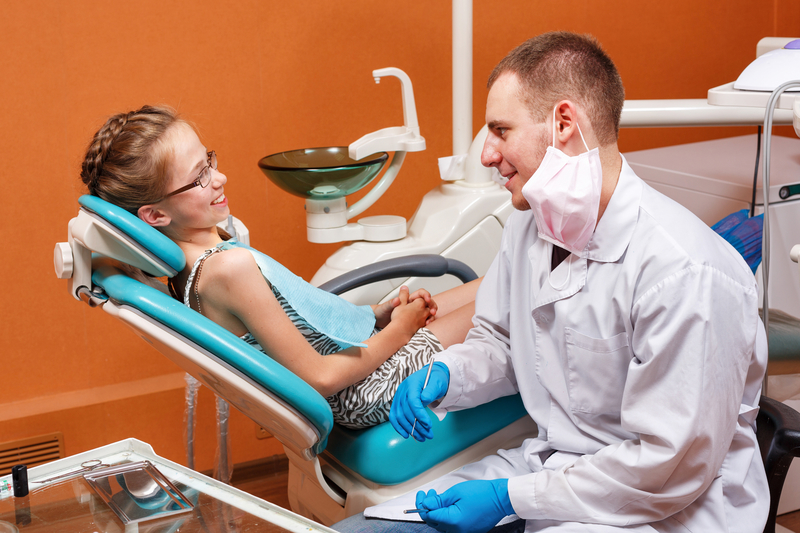
There are many orthodontists out there, but not all are created equal, and not all have the same training or experience as others. Just like dentists, only some are award-winning orthodontists (for good reason), while others are not. A good orthodontist needs to have specific training and credentials to work on your or your child. Their office needs to have specific equipment to perform the necessary work, and a good orthodontist will provide a wide range of services for their patients. Find out what a good orthodontist looks like and how to choose a good one from one you want to avoid!
Choosing to Receive Braces
If you have made the choice to get braces, we commend you! Braces is an amazing way to change your life for the better. Studies show that straightening your smile is directly related to increased confidence. The better a person’s smile looks, the more they smile and the more confident they appear to others as well. Studies by Invisalign and countless others have found that a straighter, more beautiful smile makes you appear happier, healthier, wealthier, and more attractive to others. 73% of people are also more likely to find you trustworthy.
Now that you have chosen to embark on this new journey of getting braces, you have to decide who you should get your orthodontic care from. All too often, dental practices have started offering orthodontics via transparent aligner systems or Invisalign. Even though we offer Invisalign at our center (and it is effective), the majority of dentists are not trained to perform orthodontics. It’s similar to a spa offering botox injections instead of a medical doctor that provides botox injections. They may have some training in oral health and dentistry, but dentistry is not the same as orthodontics.
You always want to choose a trained orthodontist to provide you orthodontic work, and not just a dentist (or even someone without a degree) to perform any work on your mouth. If you do, you take a serious health risk that your teeth will be messed up permanently or that you will have oral health complications. Always go to a certified and trained orthodontist for your orthodontic work.
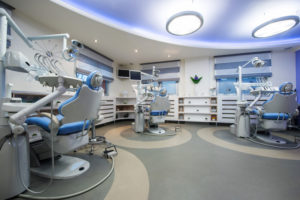
Training to Become a Good Orthodontist
Becoming a good orthodontist takes many hard years. A good orthodontist will receive an undergraduate degree and then will go on to be accepted into dental school. A good orthodontist will receive high marks in their dental school, and will have to be accepted into an orthodontic school afterwards. Some even go beyond their 10 years of base training to do fellowships and additional study. It takes an entire decade to learn how to straighten the teeth properly, even if orthodontic care may seem simple and straightforward.
Orthodontists deal with the health of a person’s mouth, which can affect their overall health, their confidence, and even if they are at risk for tooth decay, gum disease and more. Working with children in orthodontics can be even trickier, as many children require specific work to make space in the jaws for incoming teeth.
What Is Their Experience with Children?
The majority of good orthodontists work with children on a regular basis. However, there are some that have better training than others. You always want to look for a good orthodontist that has training to work with a child on their intellectual level. Children sometimes fear dental or orthodontic office or having work done on their mouth. We strive to provide a child-friendly atmosphere to our young patients to make them comfortable during their treatment.
A good orthodontist is one that can help your child feel at ease and confident about the smile they are getting. When choosing an orthodontist, observe how they act with your child. If they are warm and inviting, this can help children have a positive orthodontic experience for early orthodontic treatment and when they receive braces for straightening later on.
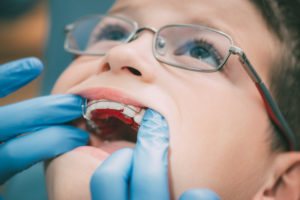
What Qualities Do We Have?
If you want a good orthodontist, give Belmar Orthodontics a try! Dr. Hardy is an award-winning orthodontist that treats patients at two different locations. He has extensive training in dentistry and orthodontics and actually runs a pediatric dentistry and orthodontics office alongside his wife. He treats pediatric patients and older at Hardy Pediatric Dentistry & Orthodontics and he treats patients of all ages at Belmar Orthodontics. Dr. Hardy offers every option available in orthodontics to his patients. That includes traditional metal braces, lingual braces, ceramic braces, Invisalign and Invisalign Teen, as well as retainer devices, TADs, and surgical orthodontics. All of these services required countless hours of training, testing and performance to become certified.
As we mentioned, you want an orthodontist who has won awards and who others are talking about. Dr. Hardy is board-certified by the American Board of Orthodontics. He is also an active member of the American Dental Association and the American Association of Orthodontics. He received the Everett Shapiro Award in Orthodontics as well as the Dr. Harold Berk Endowed prize Fund for Excellence in Research. He is also a member of many dental organizations that you can find here. He is extensively trained to work not only with teens and adults, but also children—even very young ones. Dr. Hardy also works alongside his wife often, who also has extensive training and psychology experience with young children.
We can talk about Dr. Hardy’s qualifications all day long, but the best way to know what a good orthodontist looks like is to come into the office and see for yourself. To schedule your free consultation or to learn more, call Belmar Orthodontics Orthodontist in Lakewood Colorado today at (303) 225-9016!
Teaching Children Good Oral Hygiene Habits

If you teach a child good oral hygiene habits early on, odds are that they will have better oral hygiene habits when they are teens and adults. As soon as a toddler gets their first tooth, it’s essential to start brushing and flossing their teeth. Afterwards, you will need to teach them the basics of good oral hygiene practices, especially when it comes to wearing braces. Find out what those basics are and what you should be thinking about for your child’s oral health!
Teaching Good Oral Hygiene Early
Good oral hygiene habits are essential for a healthy mouth and especially during orthodontic care. Many children need early orthodontics, which is also known as “child orthodontics”. This is when bite and alignment issues are corrected around age 7 or 8 to avoid serious problems later on. However, we hope that every child has good oral hygiene habits established well before this visit. Otherwise, not only will a child be dealing with bite and alignment issues, but they will also be dealing with tooth decay.
As soon as your child gets their first tooth as a baby, you need to start brushing that tooth. Brush it morning and night with a rice-size amount of fluoride toothpaste. Also make sure to clean your baby’s gums with a wet cloth after feedings. Once they start to grow, begin teaching them how to brush their teeth properly. You will have to help brush your child’s teeth for the first couple of years until they have the dexterity in their hands to do it themselves. Flossing will come later as more teeth come in.

Learning to Brush
Brushing the teeth is one of the most important habits a child can have. Brushing long enough is key for a healthy mouth. Make sure you get a toothbrush that fits the size of your child’s mouth. There are brushes for infants, toddlers, children, teens and adults. All will be different sizes and some children brushes will come in fun shapes and colors to help children brush.
Children can’t always tell how long they have been brushing. Having them brush their teeth for a duration of a song or brushing your teeth alongside them to make sure they brush long enough. When they are old enough to have braces, brushing is even more important than before to avoid tooth decay. Food that gets stuck in brackets can cause rapid decay. Make sure they brush longer and at different angles to dislodge food. When children are first learning, brush with them as many days as it takes when first learning to brush their teeth. Do the same when they learn to brush with braces.
Flossing 101
Children won’t have to floss until they are toddlers. The baby teeth are spaced out until they all come in. Kids will have a total of 20 baby teeth that will start to come closer together as a baby ages. Until a child has the dexterity to use floss like an adult, it’s smart to invest in flossers. These are secure, hand-held flossing tools that children can put in between their teeth to easily dislodge food. Ask us about mouthwash and fluoride products to see if they should be part of your child’s oral hygiene routine as well.
See a Dentist and Orthodontist
Starting from an early age, children need to start visiting the dentist. By age 7, they should see us for an orthodontic exam as well. Dental visits themselves are so important that most dental insurances cover those twice-a-year visits. These biannual visits generally consist of comprehensive exams and dental cleanings. At first, children may be nervous about visiting a dentist. Offices can be large with busy equipment that children aren’t familiar with. Dental tools can also be loud, which can make children nervous. However, these visits are nothing to worry about whether it is a dentist or orthodontist.
To help your child get used to being in an office, make sure you go to a pediatric dentist instead of a general dentist while they are young. Pediatric offices (such as our orthodontic one) has staff that is trained to work well with children. Dr. Hardyl has experience with children on a daily basis. He was trained in both dentistry and orthodontics and can spot the signs of dental issues early-on. His staff knows what kids worry about and they know how to explain dental and orthodontic terms so a child can understand. An exam sounds serious, but it’s really just Dr. Hardy looking inside your child’s mouth for any bite, alignment or dental problems. If a child hasn’t seen Dr. Hardy by age 7, make sure to get them in for an examination!
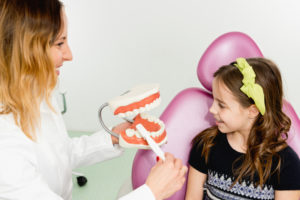
Good Habits for Life
Start children out young when teaching them good oral hygiene. If you make a habit of brushing and flossing, children will see that example and will follow it. When you help them learn good oral hygiene habits as soon as they can talk and understand, they can start keeping their mouth clean themselves. There are many resources online to help teach children specifics of brushing, flossing, and for learning about dental hygiene. We help children every day with brushing, flossing, caring for braces and establishing good oral hygiene. Call Belmar Orthodontics at (303) 225-9016 with any and all questions you have about your child’s oral health. Let us help you as you and your child learn to establish good oral hygiene habits together!
A Straight Smile for Life with Retainers
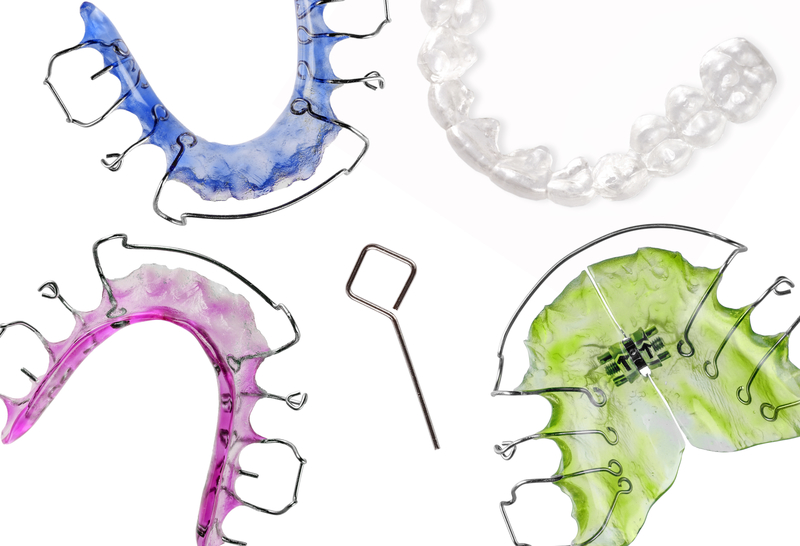
Most patients spend 18-24 months with their orthodontic appliances. That’s about 78-104 weeks of your life with braces, and time that you don’t want to have wasted. The worst thing that can happen after getting your braces off is that your teeth go crooked once more. This can happen within the first month if you’re not careful. Luckily, dentists know this and we provide our patients with either removable retainers or permanent ones. See why retainers are so important for maintaining a straight smile for life and why you need one!
Finishing Up with Braces
If you have gotten to the point in your orthodontic treatment that you need a retainer, congratulations! It has taken you 18-24 months to get that beautiful, straight smile you’ve wanted. No matter if you had lingual, ceramic, or metal braces, or if you opted for Invisalign treatment, you will still need an orthodontic appliance to keep your teeth straight. This isn’t something you want to wait on either, as studies show that your teeth start shifting back to their crooked state within the first month of getting braces off.
When our patients end their time with braces, we immediately prep them for either a removable or a permanent retainer. There are pros and cons to each of these types of retainers, but the bottom line is, you need one! A retainer is exactly what it sounds like; it “retains” your straight smile. When you wear it (usually at night), your smile won’t shift or become crooked. We take an impression of your teeth as soon as your braces come off, which we then send to our lab. You will have a retainer custom-made to fit your newly-straightened teeth that will keep them in that position for decades to come.

Retainers 101
You may need both a bottom retainer and a top one, or you might just need one. Some dentists only require a bottom retainer, as the bottom teeth tend to keep the top teeth in place. It all depends on the patient. As we mentioned, there are two types of retainers: removable and permanent.
- Removable – These are the classic retainer pieces that most people think of when they think “retainer”. When we make impressions of your teeth, we go back and use those impressions to make retainer pieces for your top and bottom jaw. Once they are done, you will come into the office and try out your new retainers. Wear them every day during the night and clean them when you take them out in the morning. Only use cleaning products that are safe for mouth retainers and never use hot water when cleaning.
- Permanent – This is also a “fixed” retainer because it is bonded to your teeth and set in place. Much like your braces (if you chose ceramic, lingual or traditional metal), we will bond metal parts to your teeth. However, these metal parts will be placed on the back of your teeth instead of the front. You can choose to have a metal bar that goes across the back teeth or you can choose small metal wires that will bond each individual tooth to the one next to it. If you choose the second, you will have the bottom 6 teeth connected, with bonding cement on each of the backs of those 6 teeth. However, the metal and bonding is small, so it won’t take up very much room in your mouth. You may not even notice it! Both the bar and series of small wires work to keep your bottom teeth in place, which will keep your top in place.
Which One Is Right for You?
Our patients can choose if they want to have a removable or permanent retainer. One might not be right for a patient depending on age and daily habits. If you often lose things (such as car keys or your phone), then you might want to choose a permanent retainer. These stay in place 100% of the time and because of that, you can never lose them. Plus, they retain your teeth around the clock, instead of only at night (like a removable retainer). Permanent retainers also aren’t visible like removable retainers are because they are attached behind your teeth.
A removable retainer will have visible bars that others will be able to see in your mouth when you show your teeth. This generally isn’t a problem, as most people wear theirs at night. If you already struggle with brushing and flossing your teeth, you might opt for a removable retainer, as flossing can be more difficult with a permanent retainer. However, both options are great for all our patients. You simply have to choose which one fits you best.

Healthy Life, Healthy Mouth
We would love every single one of our patients to have a straight smile many decades from now. If you wear your retainer like you should, or continually renew your permanent ones, you can count on keeping that straight smile. However, you also want to keep your smile healthy and free of disease throughout all those decades. After all, there is no point in striving for a straight smile if you don’t have any teeth!
No matter if you are 9 or 90, you have to keep up on proper oral hygiene practices if you want to have a healthy, beautiful smile. Brush and floss your teeth every single day, making sure to brush multiple times a day. Eat nutritious foods and cut down on the sugar to reduce your risk for tooth decay and gum disease. Also, clean your retainer every day so that it stays strong and durable for many years. If you need a new retainer, or are interested in a permanent retainer option, call Belmar Orthodontics today at (303) 225-9016!
Invisalign Treatment for You and Your Child
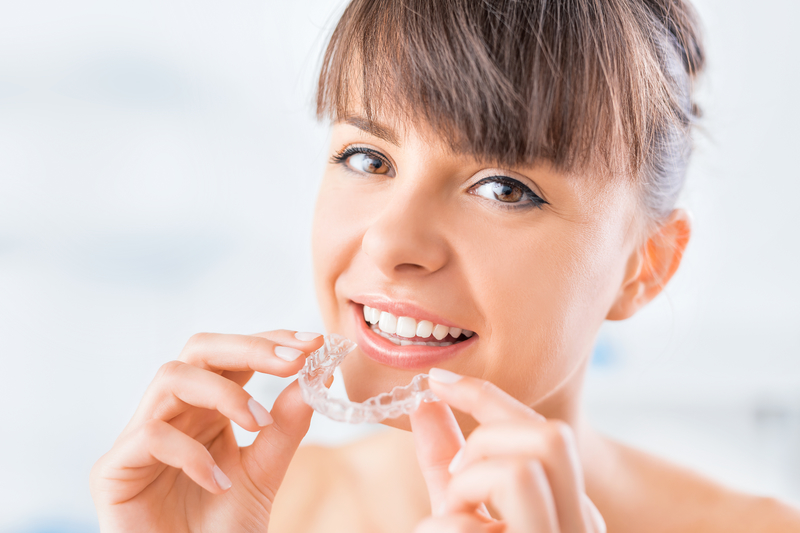
Many people think of traditional metal brackets when they picture braces in their mind. However, these are not the only type of braces available to patients. Lingual braces and ceramic braces also exist, but one of our favorite options is Invisalign treatment. Named for the invisible aligners that help shift your teeth, Invisalign is the perfect treatment option for adults and teens who want to straighten their teeth more discreetly. Find out how these aligners are custom-designed for each patient, what your treatment will look like and how you can benefit from choosing Invisalign!
What Is Invisalign?
In the past, metal braces were the only option people had to straighten their teeth. Decades ago, these metal braces even came with large headgear and lengthy treatment. Technology continues to advance each year, and now you have better (and much more discreet) options for straightening your teeth. Invisalign is one such option for patients who want straight teeth, but don’t want metal brackets for 18-24 months to achieve that smile. Invisalign is the same type of treatment, but instead of brackets, you get transparent aligners that go in your mouth much like retainers. Advantages of this orthodontic option include:
- Virtual invisibility because the aligners are transparent.
- You can remove the aligners whenever you need to, especially for eating, drinking, brushing and flossing.
- Cleaning the aligners are much easier than cleaning brackets and wires.
- Less office visits are typically needed for patients.
- Total time for optimal results is generally shorter than metal braces.
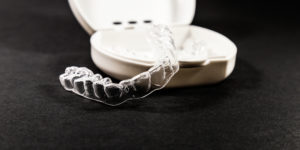
How Does It Work?
Your Invisalign treatment will be much different than traditional metal braces would be. However, Invisalign treatment is much easier than metal braces. Dr. Hardy will take an impression of your teeth using a special 3D imaging machine called an iTero Element Scanner. This will digitally record all the grooves and shapes of your current teeth without any sticky molds. Then, your aligners will be custom-made for you that you will take home with you and switch out every 2-3 weeks. Every person’s gumline is different, so the digital impressions of your teeth is an important part of the Invisalign creation process. Once your aligners are made, we trim them to fit your gum line. A custom-fit means that your aligners will fit so snug against your teeth that they will almost seem invisible.
Your treatment plan will be made based off of the current shape of your teeth and if you have any bite and alignment issues. We will be able to tell if any of these issues are present during your consultation. Once your treatment plan is made, you will wear your aligners between 20-22 hours a day for 18-24 months. The treatment time is similar to what metal braces or other orthodontic options would be. On average, our patients need 18-30 aligners for a period of 9-15 months to achieve their desired outcome.
Can Children Use Invisalign?
Some children will be candidates for Invisalign treatment, whereas others will not be. Often, child orthodontics is needed to correct bite and alignment problems that are severe in children. These problems include overbite, underbite, crossbite and other problems with a misaligned bite and jaw. Some problems are severe enough that children will require metal or ceramic braces to fix the problem. Invisalign treatment can correct some bite and alignment issues, but not if they are severe. A severe problem may make your child unable to use Invisalign aligners until they receive orthodontic treatment for teeth straightening as a teenager.
There is also the problem of the aligners being removable. Since they are clear, they are easily lost, which parents don’t want. If your child is fairly young, metal braces might be the smartest choice for them so they don’t lose the aligners. Dr. Hardy can assess your child’s oral health to see if they are candidates for Invisalign treatment or if they need other orthodontic appliances.
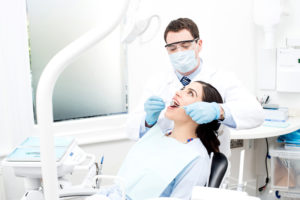
Invisalign Teen
For many teens, they don’t want metal braces that are very visible to everyone. Metal appliances can also make eating, speaking and maintaining clean teeth challenging. Many teenagers are also self-conscious about braces and their appearance, which generally brings less smiles and confidence. The invisibility of Invisalign Teen is why it’s so popular with this age group. Invisalign Teen is simply Invisalign treatment made with teenagers in mind. For teens who play sports, they can remove their aligners in order to wear mouth guards or to play musical instruments.
Why Should I Choose Invisalign?
Do you want straighter teeth? Do you want to straighten your teeth without everyone knowing? Would you like to avoid all the work that goes into cleaning brackets with metal braces? Then Invisalign treatment is for you! Invisalign aligners are fit to your mouth, comfortable and transparent. You can remove them as you need to and cleaning is very easy, especially for children and teens. If you want a beautiful smile while you receive orthodontic treatment, ask our office about receiving Invisalign treatment for you and your child. Call Belmar Orthodontics today at (303) 225-9016 for your free consultation!
Foods and Drinks that Hurt Your Teeth

Braces is an amazing time to get a straighter, more beautiful smile. However, wearing braces on your teeth make them much harder to clean than they were before. This is especially true when it comes to certain foods and drinks. We have a list of foods that you should avoid during your orthodontic treatment because those foods stick to the teeth. You never want food to stay stuck in your braces, as this leads to tooth decay and demineralization. We can help you to know what foods and drinks to stay away from during your orthodontic treatment. We can also help you to know how to properly clean your teeth so you don’t have to worry about tooth decay as your teeth get straighter. Avoid foods and drinks that hurt your teeth so you can have a beautiful smile once those braces come off!
Foods to Avoid
Braces bring many changes for 18-24 months. One of those is avoiding foods that could hurt your teeth. Hard foods, sticky foods and foods high in sugar should be avoided. Eating foods high in sugar increases your risk of cavities, which you want to avoid. Also avoid:
- Hard candy
- Chips
- Ice
- Apples
- Crusty bread
- Nuts
- Popcorn
- Corn on the cob
- Carrots or other hard vegetables
- Gum (this is a big one)
- Caramel
- Sugar Daddies and similar candies
- Skittles
- Tootsie Rolls
- Starburst
- Licorice
- All types of taffy
You will also want to avoid carbonated and sugary drinks. Sugary drinks also increase your risk for tooth decay, and the last thing you want with braces are cavities. Carbonated drinks contain carbonic acid, which erodes your tooth enamel and can lead to demineralization. If your teeth demineralize, they become weaker and could even have spots where they simply erode away. Limit your citric fruits (like oranges or lemons) as well as citric drinks, as these also contain acids that will hurt your teeth and erode them.
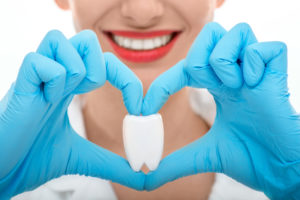
Why to Avoid These Foods
We can give you lists of foods to avoid, but it’s also best to explain why you should avoid these types of foods.
- Hard Foods – Your teeth and even you braces appliances are very hard, however, they are not unbreakable. Even without braces, you want to be careful about eating hard foods, as you could break a tooth. With braces, you could break a bracket or wire or have it come right off the tooth, which is something you don’t want. The hard candies and foods we have listed on foods to avoid are ones that we have seen hurt your teeth time and again. If you must eat hard foods (or if you really want to), cut up foods such as apples into small, bite-sized pieces. However, you should avoid nuts and popcorn hulls at all costs, as there really is no good way around eating these without the chance that you could hurt your teeth or brackets. Without braces, you want to still avoid chewing on ice or hard candies, as you could break or crack a tooth. Suck on hard foods instead.
- Sticky Foods – Sticky foods can sometimes be worse than hard ones and could even hurt your teeth more if you think about the tooth decay they can cause. Even though many sticky foods (such as gum or caramel) are soft, they are so hard to get out of your brackets. These types of foods get stuck and stay stuck long after you’ve finished eating them. Then, you have to spend a lot more time trying to brush and pick at your brackets to remove these foods. If you don’t, sticky candies and foods can sit in your brackets and wires, eroding your tooth enamel and causing tooth decay. If you eat these foods a lot, you could end up with parts of your teeth that are cratered or worn away when you get your braces off.
Cleaning Your Braces
Some tips to follow to avoid plaque buildup and tooth decay include:
- Brushing after every meal. Your braces can easily attract and trap food particles. Instead of brushing just twice a day as the American Dental Association recommends, we suggest brushing after every meal. Brush your teeth with a regular, soft-bristled brush. Brush down from the top and then up from the bottom on each tooth with a bracket to fully dislodge all food.
- Use a floss threader. You can either buy floss threaders or threadable floss. This is floss that you thread through the small spaces between teeth. You pull the floss through and then floss under your wires. The more you practice this, the quicker and easier it becomes. Don’t ever skip flossing just because it takes a bit longer, and floss at least twice a day.
- Use a proxabrush and/or waterpik. A proxabrush is a small christmas-tree brush that you can use to dislodge and clean food easily from brackets. A waterpik is a tool that shoots water in your mouth and brackets to dislodge food.
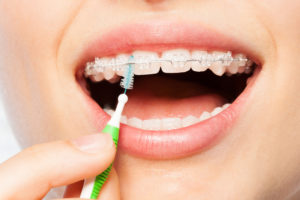
Avoid Actions that Hurt Your Teeth
Follow our guidelines for foods to avoid and what to do if you want to eat those foods. Take meticulous care of your teeth during your time with braces and you will thank yourself for the beautiful smile you’ll have when you get those braces off. If you have questions about foods or other topics that we haven’t covered, call Belmar Orthodontics at (303) 225-9016 for all of your questions!
Your Braces from Start to Finish
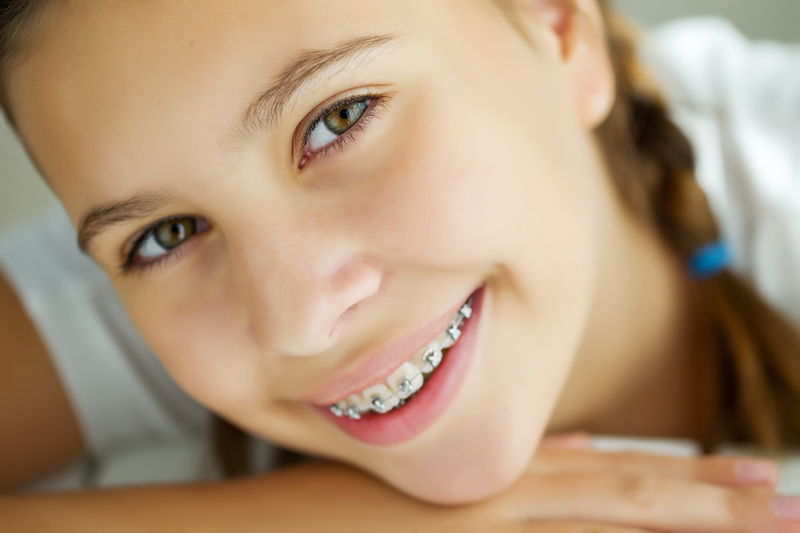
There are many things to think about when deciding to receive your braces. What type of braces should you choose? What age should you receive those braces? Then, after deciding what method of teeth straightening you want, you then have to learn how to properly care for your teeth. You will also have to get used to sometimes having sore teeth after your appointments and fitting in seeing the dentist. We can help you to know about your braces appliance from choosing a braces type, cleaning them, and avoiding tooth decay while you get a straighter smile.
Choosing Your Braces Style
Receiving braces is an exciting time for many people. It is the start of a better smile and a better you. But before you can get that straighter, more beautiful smile, you have to choose what style of braces you want. We offer:
- Traditional Metal Braces – These are the classic metal bracket and wire option that is most commonly chosen by patients. Patients who chose this option come in to have their wires tightened at each appointment.
- Ceramic Braces – These braces are a close cousin to metal braces. They have the same bracket and wire design of metal braces, except that they are made out of ceramic material. This helps decrease demineralization during your orthodontic treatment. Ceramic material is also naturally white, helping these braces to blend in with your teeth more than metal would.
- Lingual Braces – These are metal braces that are placed on the back of your teeth. Instead of just a square bracket, the metal must be custom-made to the shape of the back of your teeth. This is a discrete option that adults and teens love.
- Invisalign Treatment – This is the most invisible option available to our patients. Invisalign is a series of transparent aligners that you wear at night and throughout the day. You can remove them for eating, playing sports, cleaning your teeth and more.
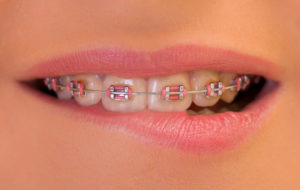
Getting Your Braces Put On
After you’ve chosen the style of braces you want, you need to have them fitted to your mouth. 3 out of the 4 options available to you will be bonded to your actual teeth. At our office, we make sure your teeth are thoroughly cleaned and dried before we bond brackets to them. With metal braces, we will use a cement bonding glue to adhere a metal bracket to the center of each of your teeth. Your back molars might receive a band that goes all the way around the tooth.
Once the metal bracket is cemented to the center of each tooth, we will pass a small metal archwire through each bracket both on top and on bottom. In the end, you will end up with a wire across the teeth on your upper jaw and across the teeth on your lower jaw. The glue we use may taste a bit unpleasant, but it is otherwise harmless. The entire process of getting your brackets and wires placed on your teeth will be between 1 and 2 hours.
The Process for Other Options
Depending on what option you have chosen, your braces process might be a bit different. Ceramic braces are applied the same way that metal braces would be, as they too consist of brackets and wires. However, if you choose to get lingual braces, we can’t simply place brackets on the backs of your teeth. Once Dr. Hardy has determined that you are an ideal candidate for lingual braces, he will take impressions of your teeth. He then sends them to a lab so that your brackets and wires can be custom made. The braces will then be bonded behind your teeth at a separate appointment.
For Invisalign treatment, we design a series of transparent aligners that you will switch out each week. We can take digital impressions of your mouth that we will use to design your aligners. We use a digital scanning system that sends images to a state-of-the-art printing machine. Then, each week you will have new aligners that you will simply replace. It’s that easy!
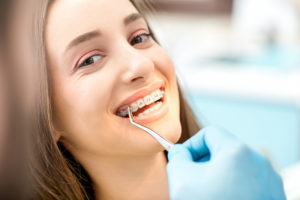
Your Orthodontic Experience
Most patients will have braces for 18-24 months. Some people don’t like braces, but the majority of people do. You can choose the style of your braces and if you want them to be hidden or noticeable. You can also dress up your braces with colorful bands if you so desire. Braces require more care than what you are used to. You must take more time with brushing and flossing, even using tools such as a waterpik, proxabrush and floss threaders to fully remove food from your braces. You must clean your teeth thoroughly to avoid tooth decay during your time with braces. We can show you how to do all of this at our office.
Each patient will come in every 4-6 weeks for orthodontic checkups. This is where we will examine your braces and how your teeth are moving. You will experience initial soreness and discomfort after you first get your braces. You might have this discomfort every time your braces get tightened as well. A simple over-the-counter pain reliever should help you as well as eating soft foods. Having braces changes life a little bit when it comes to cleaning your teeth (which takes longer), but the benefits far outweigh everything else. At the end of your treatment, you will have an amazing, beautiful smile that is sure to wow everyone around you. If you want to know more about your braces options, or want to get started on your journey today, call Belmar Orthodontics today at (303) 225-9016!
Dental Care during Braces
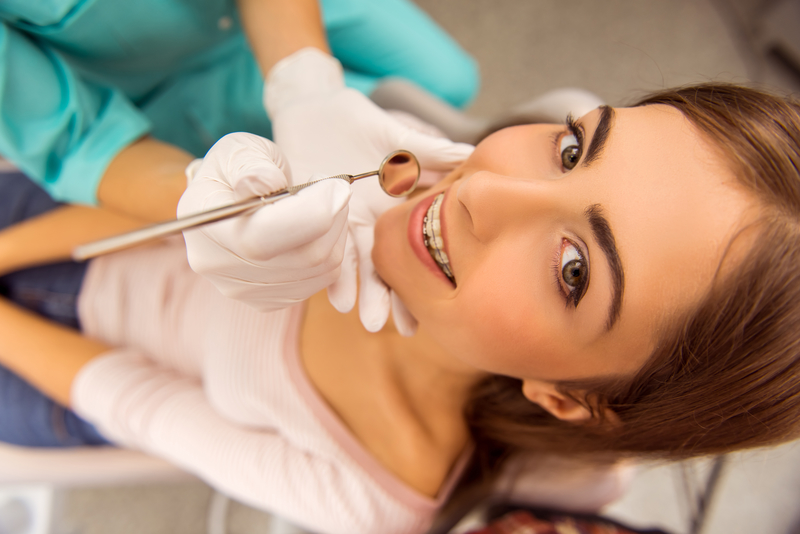
An orthodontist has been to dental school and is skilled enough to spot gum and teeth problems. However, seeing an orthodontist is not enough to keep your teeth healthy. During your time receiving braces, it’s also important to keep seeing a dentist for cleanings, exams and dental treatments. Learn why dental care and oral hygiene is important during your time with braces and how it can help you have a better smile after your braces!
Caring for Metal Braces
Your dental care during braces will depend on the type of braces you receive. If you choose metal braces, brackets and wires in your mouth make it easier for food particles to get stuck. This quickly leads to dental issues if proper care is not taken. You have to be meticulous about cleaning away plaque and stuck food particles so that you avoid tooth decay and demineralization of your tooth enamel. You do this by:
- Brushing after every meal. Your braces easily trap food particles every single time you eat. Brushing after each meal can prevent staining and reduce the potential for bacteria buildup. When brushing, make sure you have a regular, soft-bristle brush. Brush down from the top, then up from the bottom on each tooth that has a bracket.
- Using a threadable floss or floss threader. You will quickly notice that you can’t floss the conventional way with metal braces because the archwire is in the way. If you use a floss threader, thread regular floss through the eye of the threader like you would a sewing needle and thread. Or, using threadable floss, insert the small or pointed end in between your teeth, pulling it through. Once in place between your teeth, you can floss the two teeth on either side of where you have inserted the floss, taking care not to apply force or pressure against the archwire. Repeat between all teeth.
- Using a proxabrush. This is a small brush that looks like a Christmas tree. Place the proxabrush between two brackets, below the archwire, brushing up and down. After several strokes, repeat this motion by inserting the brush from the opposite side (either down from the top or up from the bottom).
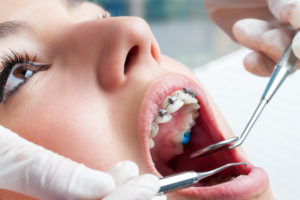
Dental Care with Other Braces
There are other types of braces besides metal braces. At our office, we also offer Invisalign, lingual braces and ceramic braces.
- Ceramic braces – Care for ceramic braces is the same as for traditional metal braces. This is because the design of these braces are the exact same, except they are made out of white, ceramic material.
- Lingual braces – These braces consist of brackets and wires that are placed on the tongue-side of your teeth (meaning behind the teeth). You will have to be more careful with brushing and flossing your teeth, as you won’t be able to see the brackets and wires as well. However, cleaning is very similar to how you would clean metal braces. With flossing, floss threaders will become your best friend, and you’ll want to be meticulous with this because food can get stuck more often with the braces being inside your mouth by your tongue.
- Invisalign – This orthodontic appliance is completely different than the other options you have. Invisalign is a series of transparent aligners that you switch out every week. The benefit of these aligners is that you can easily remove them, and brush and floss your teeth like normal. No brackets, wires or lengthy flossing session. When you take the aligners out, rinse them to get the saliva off of them. Then soak them in a retainer/braces cleaner. An example is Retainer Brite or denture cleaner.
Do You Need to See a Dentist?
Did you know that an orthodontist must complete dental school. In order to practice orthodontics, they need to complete a 4-year bachelor’s degree followed by 4 years of dental school. After that time, an orthodontist will continue 2-3 years of additional training and schooling to practice orthodontics. Therefore, an orthodontist knows what a dentist knows when it comes to your oral health. However, one point that we want to stress is that you need to continue seeing the dentist during your time with braces.
An orthodontist is skilled at treating issues with your oral health, however, an orthodontist is in charge of correcting bite and alignment. A dentist is the one that will need to correct problems with tooth decay and gum disease. Even though an orthodontist has received the same training, their profession is to not to fill cavities or do root canals unless their practice does both. During your time with braces, you must continue receiving dental care from a dentist. Braces raise your risk for tooth decay and gum disease
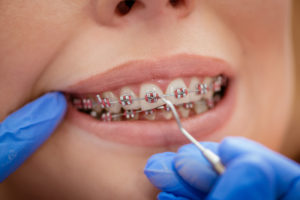
Dental Care during Your Time with Braces
Your dental care during braces will depend on the type of braces you receive. Many patients choose traditional metal braces for straightening their teeth. No matter what orthodontic option you choose, it is particularly important to maintain great dental care through attention to proper oral hygiene. If you don’t know what that proper hygiene routine looks like, we can help you. As always, if you have any questions about braces care or maintenance, please do not hesitate to contact our office. We are here to help you reach your goals and to keep your mouth healthy. For help caring for your braces, or if you are finding certain oral hygiene tasks difficult, call Belmar Orthodontics at (303) 225-9016!
How to Choose a Good Orthodontist
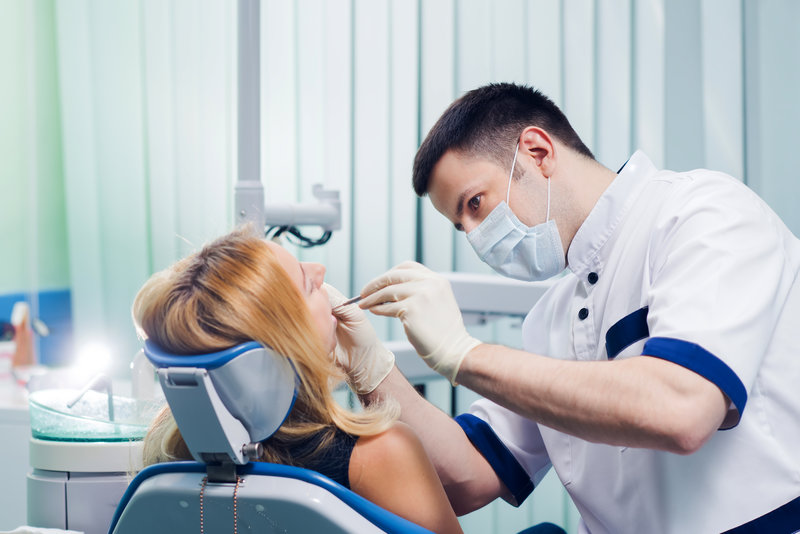
The American Dental Association recommends that your child have their first orthodontic visit between ages 7 and 8 to correct bite and alignment issues. Teenagers, as well, need to visit the orthodontist to correct the alignment of their permanent teeth. How do you know what orthodontist to go to? Choosing an orthodontist is a big decision, as it will determine the health of your teeth and the quality of care you receive. Orthodontists are different than regular dentists and must go through several years more of quality training. You want to look for an orthodontist that has this training. Finding one that can work with children as well as adults is also important. Learn about orthodontists, what constitutes a good one, and what factors you must consider when choosing one!
Choosing a Good Orthodontist
When you choose an orthodontist, you are choosing a person that has had extensive training and years of schooling to take care of your teeth. An orthodontist must complete 4 years of undergraduate training and then be accepted to a 4-year dental school. They then continue a 2-3 year doctorate training to work with patients to correct bite and alignment. Essentially orthodontists are specially-trained dentists that specialize in bite and alignment issues and straightening the teeth. These are services that can last a patient a lifetime. You want to only choose a speciallytrained orthodontist to work on your teeth. Never attempt to straighten your teeth on your own.
A good orthodontist must become certified by the American Board of Orthodontics. They do this through written and clinical exams and then they must recertify often to ensure that their orthodontic training is still at the highest level it needs to be. Another aspect about choosing a good orthodontist is choosing someone that truly cares about your needs and wants you to be as successful as possible. At Belmar Orthodontics, our success is dependent on your success. We try to keep our office up-to-date with the latest state-of-the-art treatment and services to transform your smile into something beautiful in the least amount of time.
Your Braces Options
A good orthodontist will be skilled in several methods of straightening your teeth. We are skilled to provide you more than just traditional metal braces. We also offer the following options for orthodontic care so you can truly choose how your want your straightening treatment to be:
- Incognito Lingual Braces – These are metal braces that are attached to the inside of each tooth. They straighten much light traditional metal brackets, but their hidden apparatus makes them especially appealing for adults and professionals.
- Invisalign – This is a series of transparent aligners that are custom-made for each patient and are changed every 1-2 weeks. This allows a patient to straighten their teeth virtually invisibly. Plus, the aligners are removable for cleaning, eating, sports and similar activities.
- Clear Ceramic Braces – These are braces that mimic metal braces but are made of ceramic material. Even the archwire can be made white like the brackets, helping both to blend into the teeth. Ceramic helps decrease demineralization.
- Retainers – The best way to keep your smile straight is to wear a custom-made retainer after treatment. We can customize retainer trays that you wear each night to keep those pearly whites straight. We can also provide you permanent retainer devices that are attached to the back of your front teeth.
Orthodontic Care for Children
Not all orthodontists work with children or know how to. However, child orthodontics is very important for the health of many children. Children should see an orthodontist between 7 and 8 years old. This is a critical time to correct bite and alignment issues that become severe later on in life. These problems cause speech impediments, problems eating, speaking, chewing and more. A good orthodontist will be one that works well with children and keeps the office environment inviting for them.
Do You Need a Dentist?
An orthodontist does many services to help the health of your teeth, however, they don’t do everything. They are trained just as a dentist is and they know the signs of tooth decay, gum disease and other oral health problems. However, their job is to do orthodontic care, not dental care. That is why they specialized in the field that they did. A good orthodontist will frequently see the signs of tooth decay or gum problems, and a good orthodontist will refer you to a trusted dentist to fix those problems. If you have a cavity or a dental emergency, a dentist is usually the person you want to see instead of an orthodontist.
A dentist received 4 years of training in an undergraduate program. Then, he or she went on to do 4 years of dental school. There they learned services such as the following:
- Comprehensive Exams
- Dental Cleanings
- Sedation Dentistry
- Laser Cavity Detection
- Proper Oral Hygiene
- Oral Cancer Screenings
- Digital X-rays
- Dental Sealants
- Periodontal Treatment
- Scaling & Root Planing
- Sleep Apnea Therapy
- Teeth Whitening
- Root Canal Therapy
- Tooth-Colored Fillings
- Same-Day Crowns/Dental Crowns
The majority of dentists also offer cosmetic dentistry options such as dental implants, cosmetic bonding, dental bridges, porcelain crowns and porcelain veneers. If you want to transform your smile beyond straightening your teeth and correcting bite and alignment, then you want to see a dentist instead of an orthodontist.
Schedule Your Consultation
In Lakewood Belmar Orthodontics orthodontist is a great step in the right direction, as it means you are conscious about your oral health. Orthodontic treatment is a wonderful way to correct a smile and to make it into something beautiful you can keep for life. Studies show that a straighter, more beautiful smile can make you more confident, and others will see you as such as well as more attractive, successful and trustworthy. Who wouldn’t want those things? If you would like to learn more about orthodontic treatment and schedule your free consultation, call Belmar Orthodontics today at (303) 225-9016!
Your First Orthodontic Visit

Seeing an orthodontist is just as important as seeing your dentist on a regular basis. Did you know that children need to see the orthodontist and not just teenagers and adults? The American Association of Orthodontics recommends that children have their first orthodontic visit between the ages of 7 and 8. This is a critical time to detect and correct bite and alignment problems before they become severe later on in life. We can help you know what your child can expect from their first orthodontic visit to ease nerves. When a child grows to be a teenager, they will have to see the orthodontist again. This is to align the teeth once the adult teeth have grown in during early adolescence. We can help you know what to expect from a first orthodontic visit and how your treatment will be throughout the months of bite and alignment correction!
Your First Orthodontic Visit
Just as there are recommendations for seeing the dentist, there are also recommendations for seeing an orthodontist. The majority of people will benefit from having both a dentist and an orthodontist to monitor their oral health. Both specialize in the health of the teeth. However, a dentist deals primarily with your teeth, gums, nerves and jaw, and correct problems such as tooth decay and gum disease. An orthodontist focuses on correcting bite and alignment issues as well as straightening the teeth.
The American Association of Orthodontists recommends that children have their first orthodontic visit no later than age 7. This is a critical time in development for children and a time when orthodontic problems begin to manifest. Those problems can become severe later on in life if not found early on. Having an examination early helps to prevent the progression of orthodontic issues. It also helps correct those issues before the adolescent years, when the main focus is straightening the teeth. Many people only think of teenagers wearing braces, but about 1/4th of people wearing braces are adults and many more are children. Some patients even receive braces twice in their life because they received orthodontic appliances as a child and then later on as either a teenager or an adult.
Child Orthodontics
In children, oral health issues are present when they are still young. A child should see the orthodontist between ages 7 and 8. Bite and alignment issues are common in many children at this age. These include problems such as underbite, crossbite, openbite, overbite and more. These problems can severely affect speech development and the ability to eat, chew, bite, speak, etc., as a child ages. Even if you don’t detect any dental issues with your child or they don’t show any signs of orthodontic complications, they should still visit an orthodontist.
An orthodontist is trained to observe the proper progress of incoming teeth while monitoring facial and jaw development. They have also been trained in dental school and can spot hidden dental issues. Many dental issues (such as cavities) can actually be caused by crooked teeth or bite and alignment problems that make it hard to brush the teeth properly. An orthodontist can guide incoming permanent teeth into their ideal position and reduce the risk of impacted teeth. Orthodontic appliances also reduce the risk for permanent tooth extractions. Seeing an orthodontist early can greatly impact your life!
What Can You Expect?
You can expect to meet a friendly staff when you come into the office. We are trained to work well with children and adults alike. Many of our patients are children and teenagers. We know their concerns, fears, and their expectations. Dr. Hardy and our staff are gentle and comforting with young patients who often have apprehensions about visiting a dental office. Our goal is to practice an open, compassionate dialogue with them so they can feel comfortable and safe. We generally start out the appointment with a tour of our office and an introduction to the staff. You will meet Dr. Hardy and he will explain everything you need to know about your orthodontic care.
A first orthodontic visit is a time to examine the teeth and see if braces are needed. Some patients will need them as children, while others will only need braces when they are teenagers. We conduct a thorough examination of your teeth and mouth. We also take photographs and x-rays of your teeth and mouth so that we know the exact size and shape of your jaws and your teeth alignment. If orthodontic treatment is needed, we will also take impression molds of your teeth. This is a simple process where we place soft molding in your mouth, let it toughen up a bit, and remove it for a picture perfect view of your mouth. If treatment is needed, we can make an orthodontic plan for you and explain all that will happen in subsequent visits.
Our New Patients
As part of our commitment to providing you with the highest quality care, we value your time and want your first orthodontic visit to go as smoothly as possible. We are always available to answer your questions and help prepare you for that first orthodontic visit whether you are a child or an adult. All new patients will receive a comprehensive exam at their first visit to see how their oral health is doing. Then, Dr. Hardy will discuss any orthodontic treatments he believes may be beneficial. To schedule your orthodontic visit or one for your child, call Belmar Orthodontics today at (303) 225-9016!
How Braces Improve Dental Health
Did you know that braces can improve your dental health? Dental and orthodontic care go hand-in-hand. Many dentists have training to spot problems with bite and alignment. These problems can be corrected with proper orthodontic care, and should be corrected early-on before children have grown. Receiving braces as a child can correct problems that become severe later in life. Receiving braces as an adolescent and even as an adult can greatly improve your oral health, as it decreases your chances for tooth decay and even gum disease. Straighter teeth are teeth that are easier to clean and easier to take care of. Learn how investing in braces can improve your dental health today!
Braces Improve Dental Health
DId you know that orthodontists also attend dental school? Orthodontists go through 4 years of undergraduate school, then move on to 4 years of dental school. Afterwards, they must complete and additional 2-3 years of special training to perform orthodontics. Orthodontists are skilled at not only making your teeth straighter, but also helping you to improve your dental health. Dr. Hardy understands how the teeth work and that straighter teeth are teeth that have a reduced risk for cavities and problems with gum disease.
When the teeth are crooked, it can make it much harder to clean between each tooth thoroughly each day. To keep a healthy mouth, every single day counts and plaque must be removed with frequent brushing and flossing. What if the crookedness of the teeth prevent your toothbrush or floss from reaching certain areas? Those areas will be prone to, and will probably start to develop, tooth decay and/or problems with the gums. In contrast, when the teeth have been properly aligned with orthodontic care, cleaning them becomes a simple task. A toothbrush can easily reach all the surfaces and floss can get in between each tooth. That gives you a much better chance at having great oral health.
What Else Can Braces Do?
Braces are highly beneficial for not only straightening your pearly whites, but also for correcting bite and alignment problems that so many children have. Between the ages of 7 and 8, a child should see an orthodontist and get their bite assessed. We look to see if your bite and teeth line up correctly. If they don’t, you may have one of the following: openbite, crossbite, overbite, underbite, malocclusion, etc. All of these problems can make chewing, speaking, biting, etc., difficult. If a smile is left untreated, problems that were minor become severe over time and require more extensive procedures. However, braces are a perfect method for fixing these problems at an early age, saving you time, money and your health.
Common Oral Health Problems
We mentioned that braces can help your dental health by lowering your risk for oral health issues. The two most common oral health problems are tooth decay and gum disease. You may know tooth decay by one of its other names: dental caries or cavities. Tooth decay is the erosion of the tooth enamel over time. Almost every patient has had some form of tooth decay in their life. However, tooth decay–or cavities–are 100% preventable if you have a habit of taking care of your teeth.
Tooth decay is caused by plaque—a sticky film made from sugars in the foods you eat mixed with bacteria. This plaque sits on the teeth and erodes the tooth enamel. Over time, that plaque can eventually weaken a tooth and get inside, where it will start to cause decay. The teeth aren’t the only ones that are affected by plaque. Plaque also attacks the gums, causing them to become swollen, red, and irritated. You may even see your gums bleed easier. When the gums continue to become inflamed, they will eventually recede from the teeth, causing the teeth to fall out. Thankfully, both tooth decay and gum disease are avoidable. Straighter teeth can help make brushing easier, and thus help decrease your chances for either condition.
Your Dental Health
When it comes to the teeth, you only have one set. You want to do all you can to keep your dental health intact. Straightening your teeth with braces can help you, plus, you’ll receive all the benefits a better smile can give you. So what are you waiting for? Schedule your appointment with Belmar Orthodontics today at (303) 225-9016!


